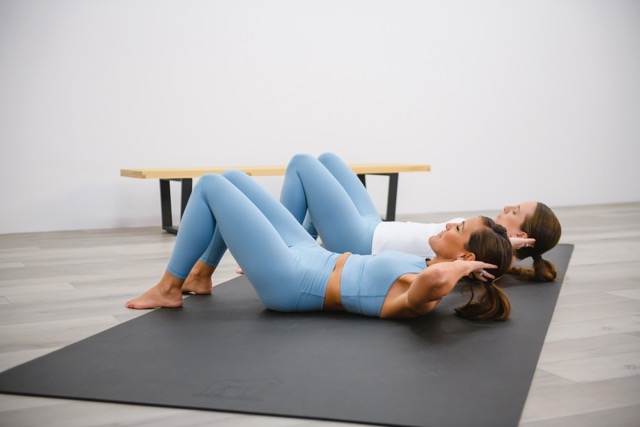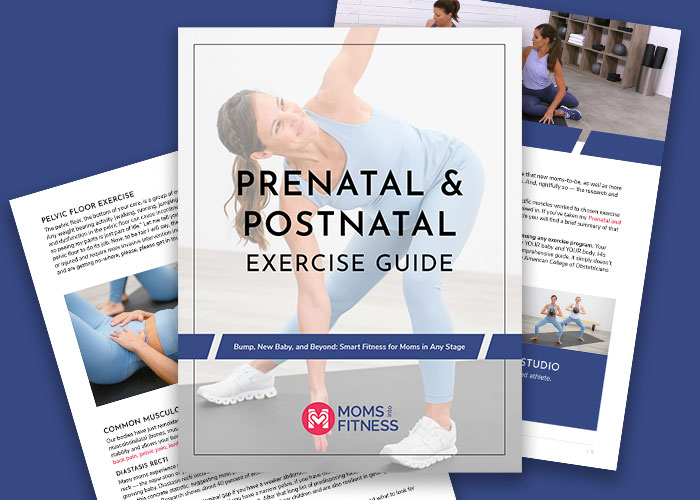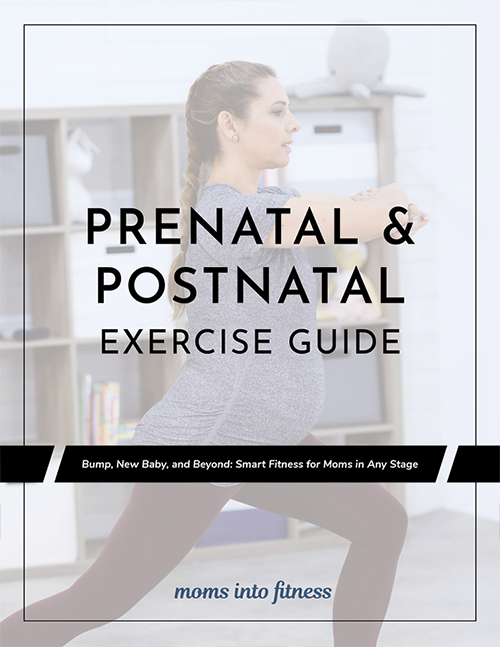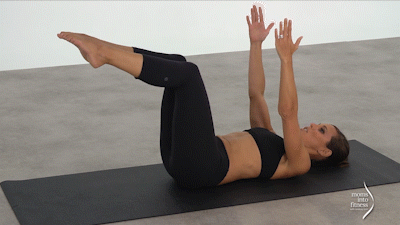
To support the pregnant body’s growing frontside, certain muscle groups take on more pressure and strain. This imbalance can lead to long-term back pain, rounding of the upper back, and distended belly post-baby. To compensate for all of these postural changes, the exercise routine must follow suit!
So why does the distended belly stick around? This “pooch” is not just from being pregnant. The biggest reason a distended belly remains is due to an underused or under-activated core muscle, the transverse abdominis.
We are used to working our six-pack muscle (the rectus abdominis). For example, a crunch mainly works your rectus abs. But we are going to teach you how to active your innermost core muscles. In fact, I recommend you don’t waste your time on another crunch until you know how to activate these innermost core muscles!
The transverse abdominis — one of the most important core muscles — goes unnoticed in traditional ab exercises. If you have had a baby, knowing what exercises you can do for the transverse abdominis is really important! We use this important muscle in all of our Postnatal Workouts.
We will get into some transverse abdominis exercises and postnatal ab exercises in a sec, but first things first.
Do you have an abdominal separation, otherwise known as diastasis recti? Believe it or not, research has shown that at least 45% of moms have an abdominal separation six months postpartum. Most of us don’t know that it’s there until they experience a weak core, a belly they don’t like (i.e., the mommy tummy, muffin top, or any other ugly name we call it!), and/or low back pain.
A distended belly will be present several weeks following birth as everything falls back in place. A distended belly can also be due to an under-cued transverse abdominis, but also poor nutrition and/or intra-abdominal fat. Download our Ab Rehab Guide to learn more.
Check out this video for a diastasis recti self-test. If you suspect you may have one, please contact your doctor or midwife for confirmation. The four exercises listed below are safe for diastasis recti.
Smart fitness for moms in any stage: bump, new baby, and beyond.


To get your body back it is important you work your core from the inside. Perform this four-minute workout. I am going to teach you how to activate the TA (transverse abdominis), PF (pelvic floor), and diaphragm.

TRANSVERSE ABDOMINIS SIDE BRACING
Begin lying on your side with your knees bent, feet resting on the floor, and the fingers of your top hand resting on your stomach — just inside your hip bone. Tighten your abdominals, drawing your belly button in towards your spine. You should feel your muscle contract under your fingers. Hold this position, then relax and repeat. Breathe. Perform for 30 – 60 seconds.

BENT KNEE FALLOUTS
Lie on your back with your knees bent and feet resting flat on the floor. Tighten your abdominals. Without letting your hip bones move, slowly lower one knee out towards the floor — only as far as you can without your pelvis moving. Slowly return to starting position. Alternate with other leg, repeat. Brace your core so your pelvis is stationary. Perform for 30 – 60 seconds.

Core Stability: March
Lie on your back with your knees bent and feet resting flat on the floor. Tighten your transverse abs using the TA breath (in the 90 second video above). Without letting your pelvis move, slowly lift one knee to a 90-degree angle, then the other knee. Slowly return to starting position one leg at a time, keeping the pelvis neutral and abs engaged.

Transverse Dead Bug
Begin lying on your back with legs bent. Lift your legs and arms off the ground, keeping your knees bent. Keep your spine neutral, core braced. Lower one arm to the ground and lower your opposite leg at the same time. Repeat with your opposite arm and leg. Continue to alternate. Maintain your low back on the floor and keep abdominals drawn down towards your spine. If you cannot maintain lower back, start by alternating arms. As you become stronger, alternate legs only. Then progress to opposite arm and leg.